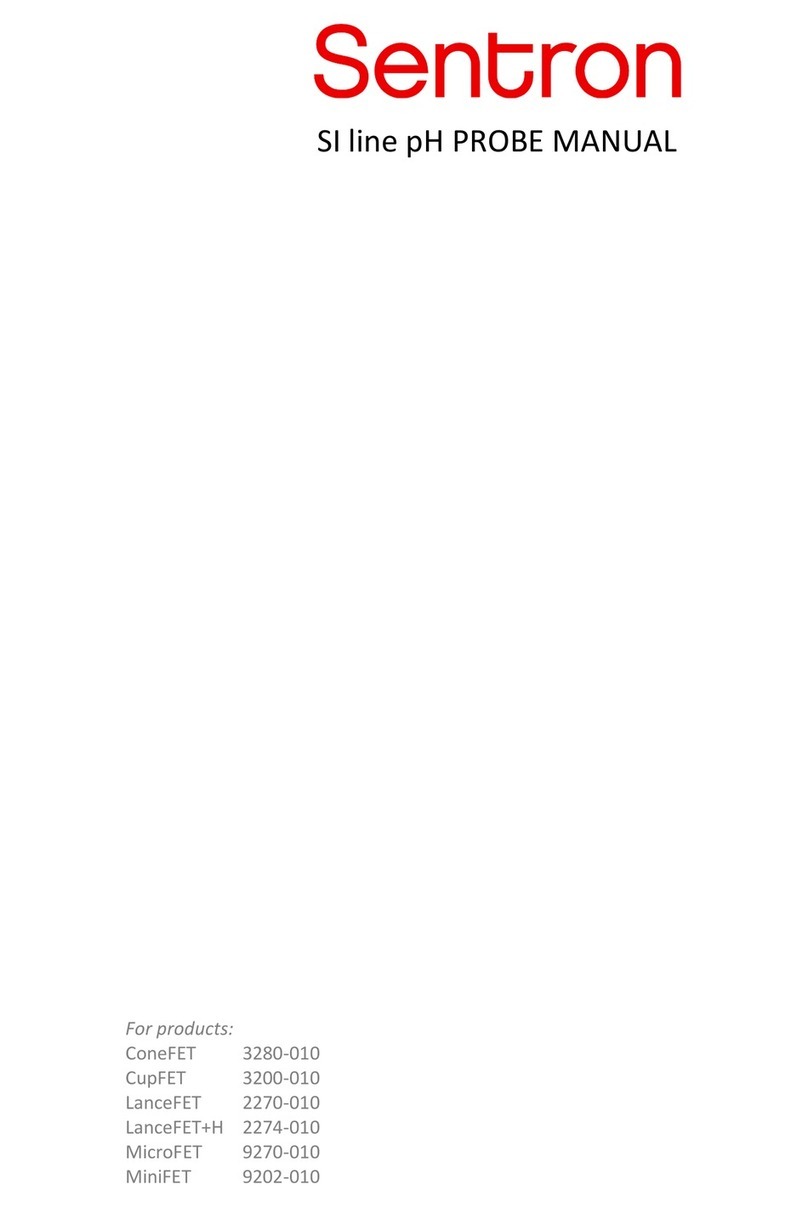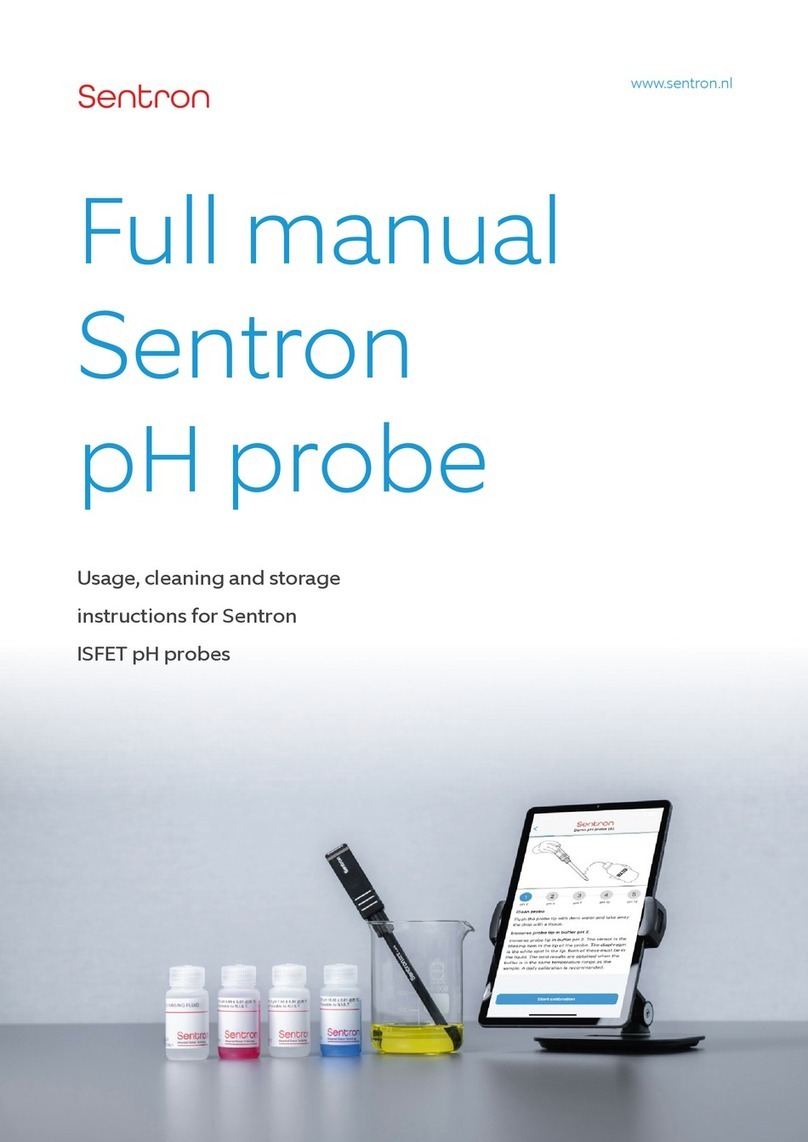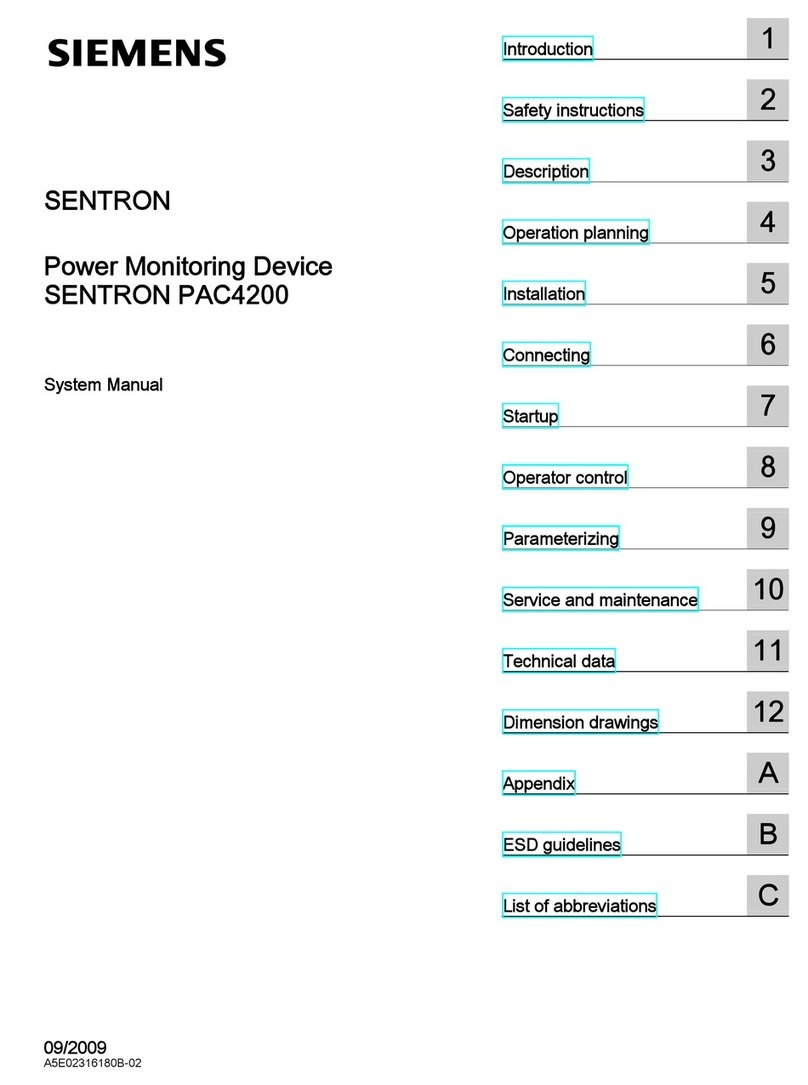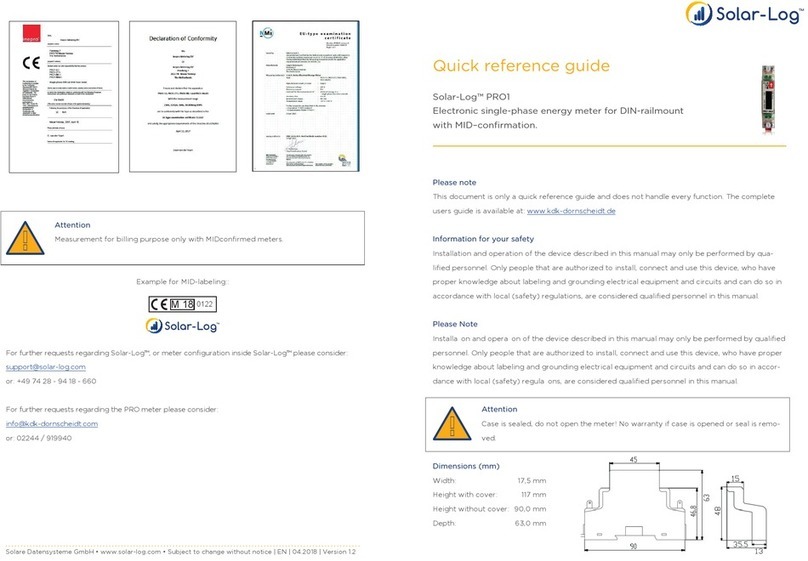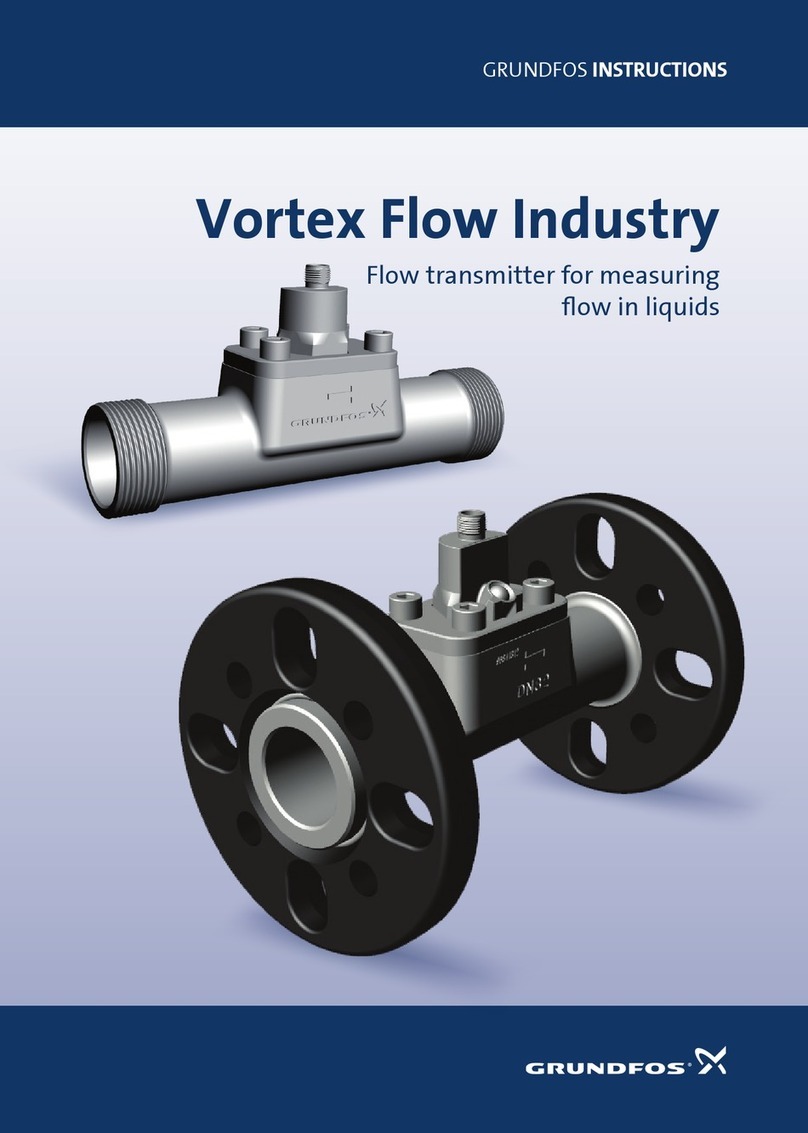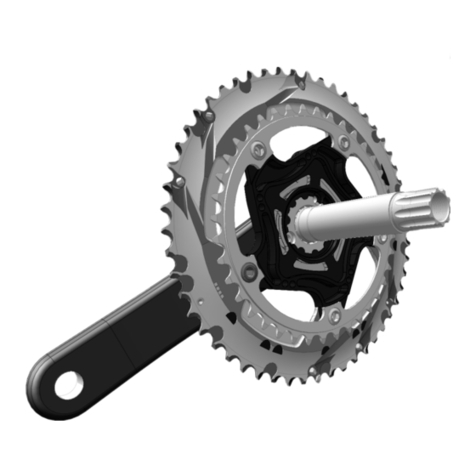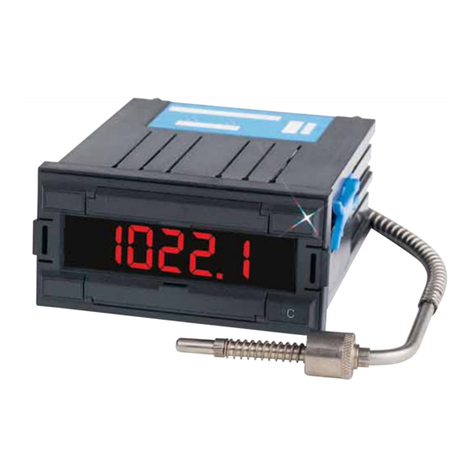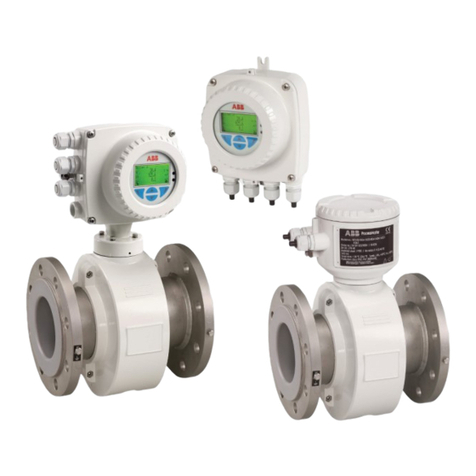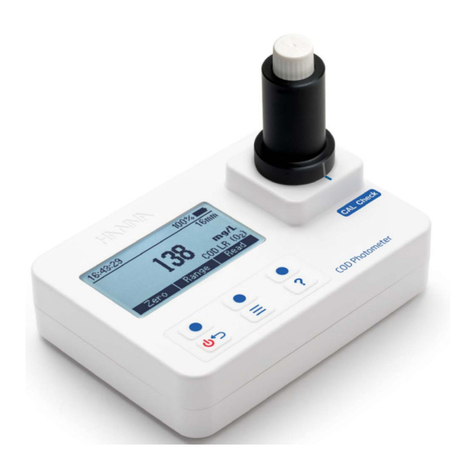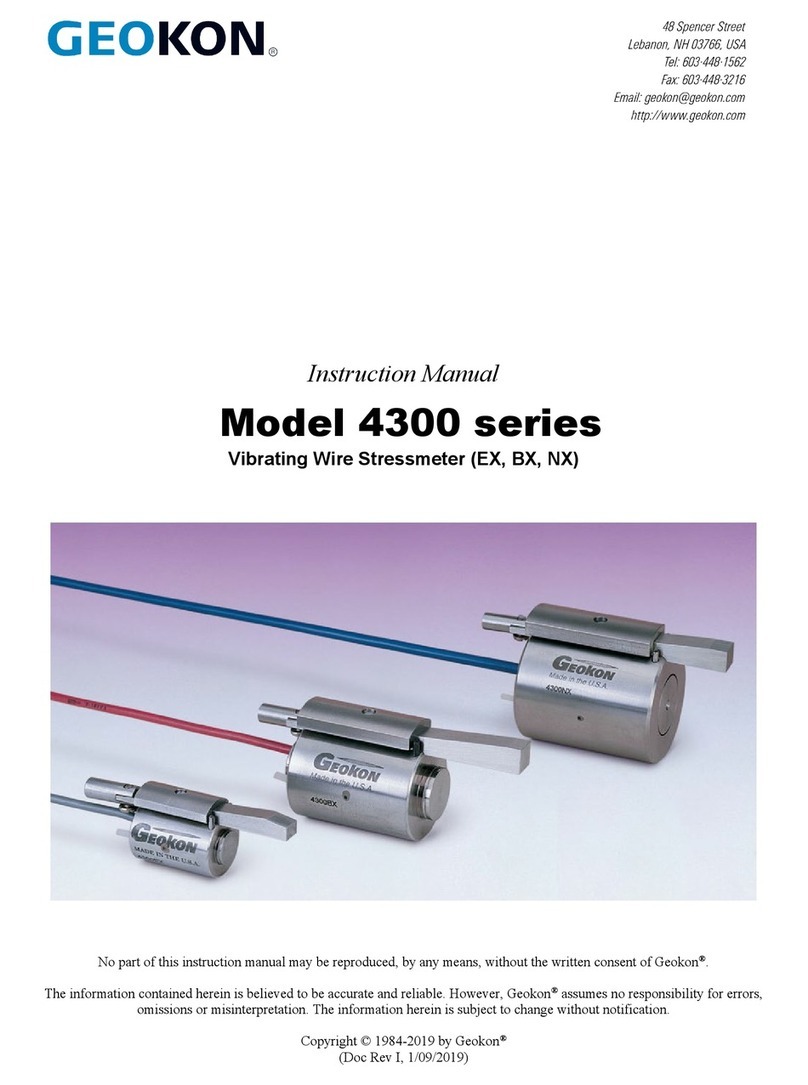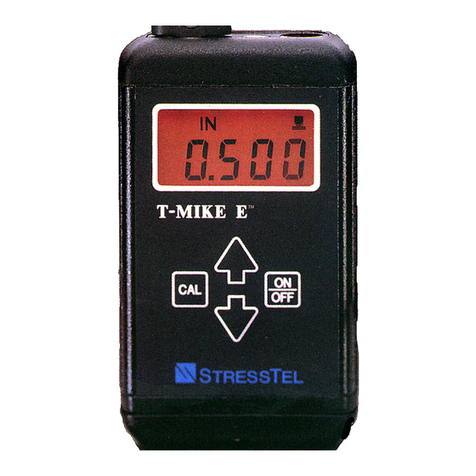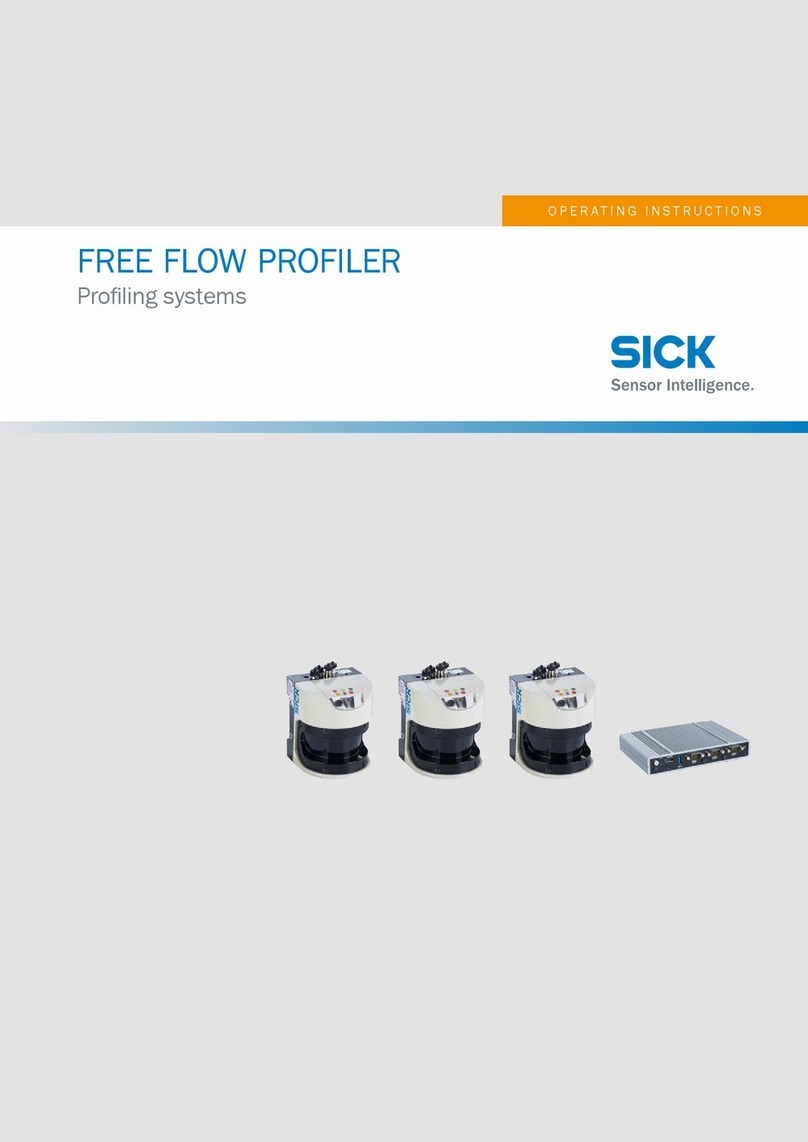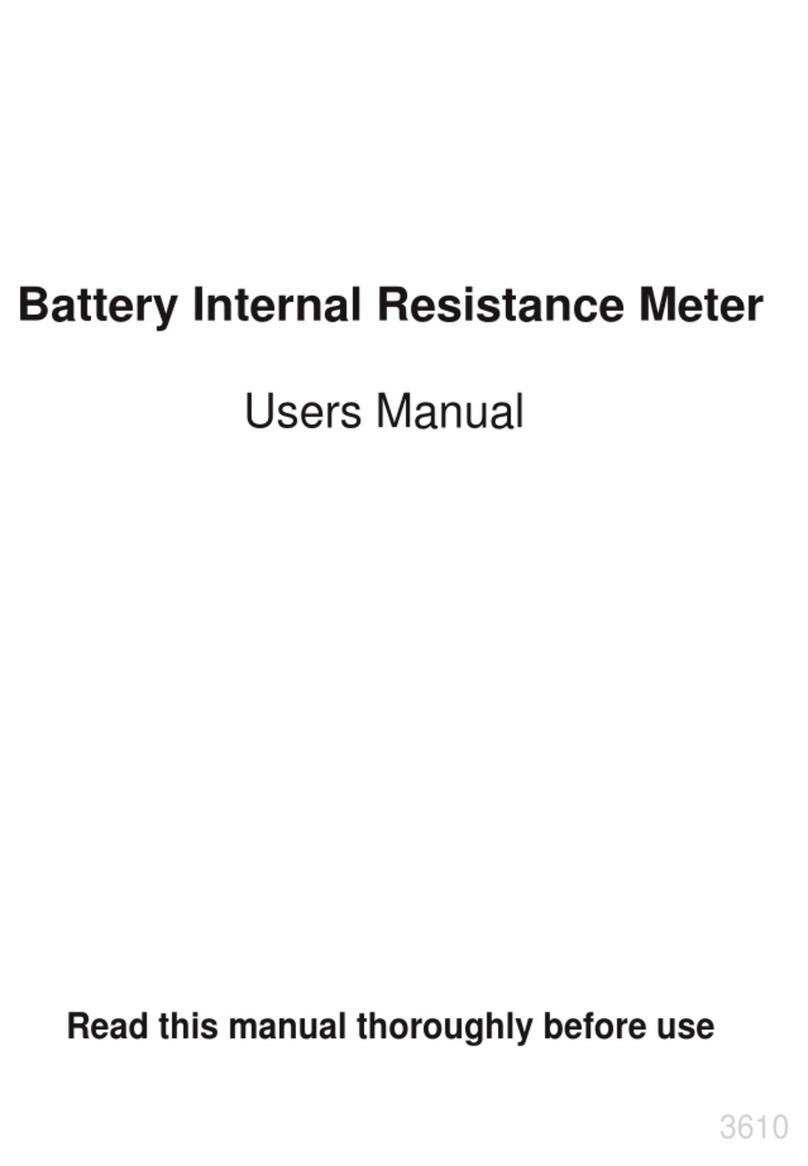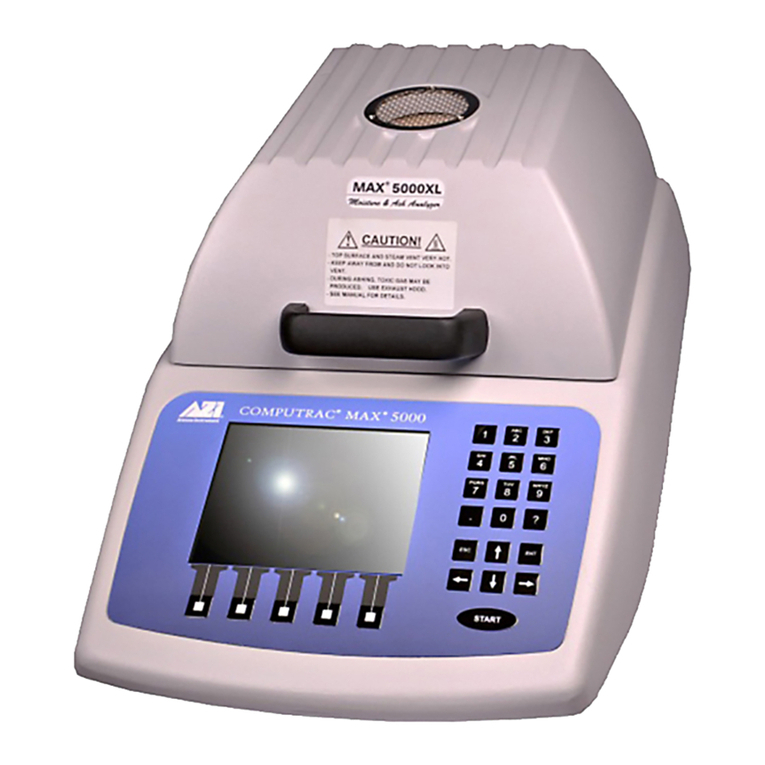SENTRON TITAN User manual

SENTRON Europe BV Manual TITAN
Page 1 of 35
SENTRON Europe B.V.
Aan de Vaart 3
P.O. Box 125
9300 AC Roden
The Netherlands
Tel: +31(0)50 501 38 00
Fax: +31(0)50 501 68 34
E-mail: info@sentron.nl
SENTRON pH Meter
Type TITAN
Operations manual

SENTRON Europe BV Manual TITAN
Page 2 of 35
Warning! There are no serviceable or replaceable parts in this product. Do not
remove any covers as this can damage the instrument and compromise
warranty.
All information contained in this manual is current at the time of publication. Our
commitment to product improvement requires that we reserve the right to change
equipment, procedures and specifications at any time.
Manual TITAN, SENTRON Ref. number E7500176, rev. 06, July 2007
In case your pH meter has this label and you are located in Europe, it means
that in case the meter cannot be used any more, you have to send it back to
Sentron to be destroyed in an environmental safe way.
Never put the meter into a trash can for ‘normal’ waste.

SENTRON Europe BV Manual TITAN
Page 3 of 35
1. INTRODUCTION.........................................................................................................................................5
1.1. WELCOME ................................................................................................................................................ 5
1.2. DECLARATION OF CONFORMITY............................................................................................................... 5
1.3. DEFINITION OF THIS MANUAL ................................................................................................................... 5
1.4. LAYOUT OF THE METER ............................................................................................................................ 5
1.4.1. Keypad............................................................................................................................................. 5
1.4.2. Display............................................................................................................................................. 7
1.4.3. Connections ..................................................................................................................................... 9
1.4.4. Battery ............................................................................................................................................. 9
2. HELP-FUNCTION......................................................................................................................................10
3. DISPLAY PH AND TEMPERATURE .....................................................................................................10
4. CALIBRATION ..........................................................................................................................................11
4.1. PERFORMING A CALIBRATION................................................................................................................. 11
4.1.1. 1-point calibration......................................................................................................................... 12
4.1.2. 2- or 3- point calibration ............................................................................................................... 13
5. AUTOREAD: STABILITY FUNCTION..................................................................................................14
6. MEASUREMENT DATA HANDLING....................................................................................................15
6.1. SAMPLE IDENTIFICATION........................................................................................................................ 15
6.2. DATA STORAGE ...................................................................................................................................... 15
6.3. DATA RECALL ........................................................................................................................................ 15
6.4. DATA DELETION ................................................................................................................................... 176
6.4.1. Delete last recorded data set ....................................................................................................... 177
6.4.2. Delete data................................................................................................................................... 177
7. ADDITIONAL SYSTEM CONFIGURATION......................................................................................188
7.1. BIAS OPTION......................................................................................................................................... 188
7.2. DISPLAY CONTRAST ............................................................................................................................. 199
7.3. PARAMETER SETTINGS ........................................................................................................................... 19
7.3.1. Select ºC/ºF.................................................................................................................................... 20
7.3.2. Power saving options..................................................................................................................... 20
7.3.3. Select language.............................................................................................................................. 20
7.3.4. Calibration buffers ........................................................................................................................ 20
7.3.4.1. SENTRON bufferset..............................................................................................................................21
7.3.4.2. DIN bufferset .........................................................................................................................................21
7.3.4.3. NIST bufferset .......................................................................................................................................22
7.3.4.4. JIS bufferset ...........................................................................................................................................22
7.3.5. mV reading .................................................................................................................................. 233
7.3.6. Calibration data .......................................................................................................................... 233
7.3.6.1. Calibration data storage .......................................................................................................................233
7.3.6.2. Calibration data recall ..........................................................................................................................233
7.3.7. Allow measurement data deletion................................................................................................ 244
8. TROUBLESHOOTING..............................................................................................................................25
8.1. ATT CODES ........................................................................................................................................... 25
8.2. RESET..................................................................................................................................................... 28
9. AVAILABLE SENTRON PH PROBES....................................................................................................29
10. SYSTEM SPECIFICATIONS................................................................................................................30
11. DEFAULT SETTINGS...........................................................................................................................31
12. CLEANING PROCEDURE ...................................................................................................................32

SENTRON Europe BV Manual TITAN
Page 4 of 35
12. WARRANTY .........................................................................................................................................323
13. KEYWORDS..........................................................................................................................................344

SENTRON Europe BV Manual TITAN
Page 5 of 35
1. Introduction
1.1. Welcome
Congratulations! You have purchased a SENTRON TITAN pH-meter capable of
highly accurate pH measurement by using the reliable and innovative SENTRON
ISFET probes.
We advise to read the Quickstart-card carefully and act according to the instructions
to ensure that the SENTRON TITAN system will work enjoyably for a long time. This
manual can be of help when further details on features are required.
The SENTRON pH-meters and probes are designed for pH-measuring only. Do not
use in any other application as this might result in instrument failure or damage.
Warning! There are no serviceable or replaceable parts in this product. Do not
remove any covers as this can damage the instrument and compromise
warranty.
1.2. Declaration of Conformity
SENTRON Europe B.V. of Roden, The Netherlands declares that this TITAN system
is in compliance with the EMC-norms EN 50081-1 and EN 50082-1.
Due to conformity to these and other norms, the instrument is entitled to wear the
CE-mark.
1.3. Definition of this manual
In this manual, words placed between “quotation marks” indicate that this text is
shown in the meter’s display. Words between ‘brackets’ indicate that you are
prompted to perform an action.
Additional information can be given in a note at the end of a section. Warning!
indicates that potentially harmful actions are to be avoided. DANGER! indicates
potential hazards when the equipment is improperly used.
At the beginning of this manual a ‘Table of Contents’ gives an overview of its lay-out
and indicates where specific information can be found. The last chapter of this
manual provides an alphabetic keywords list, referring to the pagenumber(s) where
the information can be found.
In most cases however, the meter’s on-board help function can also be sufficient.

SENTRON Europe BV Manual TITAN
Page 6 of 35
1.4. Layout of the meter
1.4.1. Keypad
The ‘controls’ of the SENTRON pH meter are condensed to only six keys located on
the keypad.
The names ‘Power’, ‘Enter’ and ‘Arrow’ keys (‘Left’, ‘Right’, ‘Up’ and ‘Down’) will be
used consistently throughout this manual.
Figure 1: Keypad TITAN
After starting the meter by pressing ‘Power’, the display will briefly show the text
‘SENTRON integrated sensor technology’, the meter type (TITAN), the software
revision number and date, and the meter’s serial number. Then the Main menu as
described hereafter will be shown.
In the bottom left corner of the display an indication can read “ATT001” or another
number. This is quite normal and no cause for concern.
Warning ! As the system is not yet calibrated, the pH value shown in the display is
not reliable.
‘Up’
‘Power’
‘Down’
‘Enter’
‘Right’
‘Left’
‘Arrow’
‘Up’

SENTRON Europe BV Manual TITAN
Page 7 of 35
1.4.2. Display
The TITAN’s display is a graphics Liquid Crystal Display (LCD). The pH value can be
shown in 1 or 2 decimal resolution and temperature can be shown or be omitted. In
chapter 3 these settings are explained in detail.
Paragraph 7.1 describes how the display contrast can be set over a wide range,
allowing easy reading under virtually any ambient light conditions.
Figure 2 shows all possible contents of the display.
Figure 2: Possible display contents
The large section of the display shows following information:
Probe status indicator
Three blocks means that the probe gives maximum performance.
Two blocks means that the probe functions fine. Some maintenance (see cleaning
procedure, page 32) can bring it up to maximum performance.
In case two blocks are achieved by new probes, it is advised to place the probe-tip in
hand-warm water for 20 minutes, and then in buffer pH 4 for 1-2 hours. Recalibrate.
One block is typical for a probe that has been in use for some time.
The probe still gives accurate results, but may require cleaning by using water,
toothbrush and some mild detergent. Recalibrate using fresh buffers.
If none of the recommended remedial actions lead to probe status improvement, the
probe is near to the end of its functional life. Replacement will be necessary in the
near future.
pH value indication
These large digits represent the pH value
Temperature indication
12.34
pH
- 123.4 °C
Help Disp Calib
AutoR Store Config
AR
CAL
++
Low
Status indication text line
12.34
pH Large section
Lower section
- 123.4 °C

SENTRON Europe BV Manual TITAN
Page 8 of 35
These smaller digits represent the actual temperature in oC/ºF, see paragraph 7.3.1.
Battery status indication
When the remaining operational time is less than approximately 5 hours, a “low”
indication will appear. When charging the battery, two alternating “+” symbols are
shown on the right hand side of the battery symbol.
The filling of the battery symbol indicates the actual battery status.
Autoread activated
When the Autoread function (automatic stability check) is activated, the text “AR” will
be shown in the display. Both the pH value and the “AR” symbol will blink when the
signal is not stable. When the pH measurement signal is within the stability limits, the
pH value and the “AR” symbol will be shown continuously, thus providing a clear
visual stability indication. Also refer to chapter 5.
Calibration indication
In the bottom left corner the text “CAL” will be blinking when calibration is in progress.
The status text line at the bottom of the middle section is used for a wide variety of
indications. Examples can be found throughout this manual.
Lower section menu items
In the lower section, the operating menu allows a
variety of choices. Use the ‘Arrow’ keys to go to the desired selection, then use the
‘Enter’-key to activate the highlighted function. The menu options shown here are
from the Main menu. Every sub-menu will show its own menu items.
++
Low
AR
CAL
Statusindicationtextline
Help Disp Calib
AutoR Store Config

SENTRON Europe BV Manual TITAN
Page 9 of 35
1.4.3. Connections
Physically different connections guarantee that it is impossible to fit connectors to the
wrong receptacle.
Connectors are placed on the backside of the TITAN meter as shown in figure 3.
Figure 3: Connectors available on TITAN
From left to right, following connectors are available:
Probe connector. This receptacle accepts the probe’s 8-pole male connector.
A physical insert allows only one possible connection.
After insertion, the connector needs to be screwed on
handtight by turning the sleeve clockwise.
AC Power supply. SENTRON provides adapters that transform wall-outlet AC
power to the level required by the TITAN meter. The meter
itself takes care of charging the internal battery.
See paragraph 1.4.4 for more information on battery
management.
1.4.4. Battery
The built-in battery is a rechargeable Nickel-Metal-Hydride (NiMH) battery. Before
shipment from SENTRON the battery is fully charged, but we suggest to connect to
AC power for at least 12 hours before relying only on battery power. Battery charging
is indicated in the display by a “++” sign on the right hand side of the battery symbol.
A fully charged battery will typically give 24 hours of use. The battery status is
constantly indicated in the display, and automatic ‘low’ battery warning is given when
the remaining battery life is approximately 5 hours.
Should the battery be completely exhausted during normal operation, it is still
possible to recharge the battery to its normal condition but it is advised that the
battery status indication is monitored by the user and that the battery is timely
recharged by connecting the meter to AC power.
Note Overcharging the battery is not possible and the applied NiMH-batteries do not
suffer from the so called “memory-effect”.
A prolonged exhausted battery may result in an automatic meter reset.
After recharging a completely exhausted battery, a user-reset may be required
to restart the meter. Please refer to paragraph 8.2.
First connect the meter to the mains, and only then switch it off. This allows a
visual check if the battery is charging correctly, indicated by the “++” signs
next to the battery symbol.

SENTRON Europe BV Manual TITAN
Page 10 of 35
2. HELP-Function
The TITAN meter is equipped with an elaborate on-board help function, designed to
provide to-the-point assistance.
The HELP function presents a situation dependant overview of the meter’s
functionality which will in most cases be sufficient for the user to continue operation.
If a situation occurs that requires the user to take actions (indicated by the text
“ATTxxx” on the display) the helptext will accurately describe the situation and what
remedy can be taken.
3. Display pH and Temperature
The TITAN meter is a highly sophisticated and accurate instrument, equipped with a
high quality graphic Liquid Crystal Display (LCD).
The pH value can be shown with either one- or two-decimal resolution, depending on
the calibration method, the user’s preference and the application demands.
The sample’s temperature is measured by a thermistor which is built into the tip of
the probe and provides fully Automatic Temperature Compensation (ATC). The
temperature can be indicated in the display.
Thus, the system offers four possible display settings:
- pH 0.1 without temperature indication
- pH 0.1 with temperature indication
- pH 0.01 without temperature indication
- pH 0.01 with temperature indication
To change between these settings, go to the Main menu. Use the ‘Arrow’ keys to go
to “Disp” and press ‘Enter’ repeatedly until the desired setting appears.
Note Because of the nature of a 1-point calibration, the accuracy is not sufficient for
a 0.01 pH indication. When selecting the 0.01 pH resolution indication after a
1-point calibration, the second decimal will blink to indicate that it is not to be
regarded as accurate. It is therefore advised to perform a calibration that
provides the accuracy required by the application, i.e. a 1-point calibration for
0.1 pH accuracy or a 2- or 3-point calibration for 0.01 pH accuracy.

SENTRON Europe BV Manual TITAN
Page 11 of 35
4. Calibration
To obtain reliable readings from the TITAN system it must first be calibrated, using
correct buffers, for maximum accuracy at the same temperature as the sample will
be.
The TITAN has four built-in tables of 5 buffers versus temperature. When performing
a calibration, the bufferset chosen is shown on the display. The built-in buffersets are
standardized DIN, JIS and NIST buffers and a SENTRON provided NIST traceable
bufferset.
Factory default, the SENTRON bufferset is selected. Please refer to paragraph 7.3.4
on selection of another bufferset.
The system automatically stores calibration results for later review.
Paragraph 7.3.6 provides all details on this function.
Warning ! Make sure that the buffers used during calibration are identical to the
selected bufferset, otherwise significant variations in measurement
values may occur.
Over time, the value from a buffer may change. Especially buffers with
values over pH 7.00 are susceptible for CO2contamination.
Make sure that the buffers used for calibration are fresh, and not
contaminated by other materials.
SENTRON provides buffers in twin-neck bottles specially designed to
facilitate this use.
4.1. Performing a calibration
If the probe is newly connected to the meter (indicated by ATT021 on the status
text line), or if the meter has been switched off for several hours, it is
necessary to place the probe in a buffer solution, with the meter switched on,
for a period of 10 minutes. This initiating time allows the probe to set itself for
use after a period of inactivity and is required to ensure stable readings.
Rinse the probe before calibration.
The TITAN allows for various calibration methods. In general, the achievable
measurement accuracy over a certain pH range will increase when a more-point
calibration is performed.
During calibration, the “CAL” indication will blink in the display
After completing the calibration, the slope percentage is briefly displayed, except with
the 1-point calibration as no slope can be calculated there.
Instead, the last calculated slope is used.

SENTRON Europe BV Manual TITAN
Page 12 of 35
Slope values can be interpreted as follows:
Slope % Interpretation
98.0 – 105.0 % Probe gives maximum performance
94.0 – 97.9 % Probe functions fine. Some maintenance, cleaning with water,
toothbrush, and a mild detergent as described in the Probe Insert
can bring it up to maximum performance.
In case such low slopes are achieved by new probes, it is advised
to place the probe-tip in hand-warm water for 20 minutes, and then
in buffer pH 4.00 for 1-2 hours. This will effectively remove any
KCl crystalization that may have occurred in the reference
diafragma due to long storage.
90.0 – 93.9 % Typical for a probe that has been in use for some time.
Probe still gives accurate results, but may require cleaning.
Use water, toothbrush and a mild detergent as described in the
Probe Insert to ensure optimum performance, then recalibrate.
If the slope remains low, use fresh buffers and recalibrate.
If the slope is close to 90% and no longer improves by mentioned
remedies, the probe may be aging and a replacement should be
purchased.
Following sections describe the various procedures to perform a calibration.
Note For maximum accuracy, choose buffers that are close to, or bracket, the
expected sample pH and perform the calibration around the same temperature
as the expected sample temperature.
If a calibration has not been successful, a message to that effect will be shown
on the display. Also, the user may opt to cancel the calibration procedure
before it is finished. In both cases, the meter will use the data from the last
successful calibration to work with.
4.1.1. 1-point calibration
The measurement accuracy achieved is + 0.1 pH and when the display is set to two-
decimal resolution the second decimal will blink continuously to indicate that it is not
to be regarded as accurate.
In the Main menu, go to “Calib” and press ‘Enter’.
On the status text line the selected bufferset is shown.
Put the probe in the buffer solution.
Go to “1 Pnt” and press ‘Enter’.
The text on the status text line changes to “First buffer”, and after that to “Recognized
XX.XX”. The menu item “Cal 1” is highlighted.
Check if the value of the buffer recognized by the meter is the same as the buffer in
use. If not, go to “Set” and press ‘Enter’ repeatedly until the correct buffer value is
shown on the status text line, then return to “Cal 1”.
With “Cal 1” highlighted, press ‘Enter’ to confirm the selection.

SENTRON Europe BV Manual TITAN
Page 13 of 35
The text on the status text line will change to “Stabilizing” and the pH value is blinking
until a stable signal is reached.
The 1-point calibration is now complete, and the meter automatically returns to the
Main menu.
4.1.2. 2- or 3- point calibration
In the Main menu, go to “Calib” and press ‘Enter’. On the status indication line the
selected bufferset is shown. Put the probe in the first buffer solution.
Go to the selected calibration method (i.e. “2 Pnt” or “3 Pnt”) and press ‘Enter’.
The text on the status text line changes to “First buffer” and after that to “Recognized
XX.XX”. The menu item “Cal 1” is highlighted.
Check if the value of the buffer recognized by the meter is the same as the buffer in
use. If not, go to “Set” and press ‘Enter’ repeatedly until the correct buffer value is
shown on the status text line, then return to “Cal 1”.
With “Cal 1” highlighted, press ‘Enter’ to confirm the selection.
The text on the status text line changes to “Stabilizing” and the pH value is blinking
until a stable signal is reached. Then the status text line changes to “Next buffer” and
after some time to “Recognized XX.XX”. The text in the menu item reads “Cal 2”.
Rinse the probe and place it in the next buffer solution.
Check if the value of the buffer recognized by the meter is the same as the buffer in
use. If not, use the ‘Arrow’ keys to go to “Set” and press ‘Enter’ repeatedly until the
correct buffer value is shown on the status text line, then return to “Cal 2”
With “Cal 2” highlighted, press ‘Enter’ to confirm the selection.
The text on the status text line will change to “Stabilizing” and the pH value is blinking
until a stable signal is reached.
Repeat this sequence for subsequent calibration points.
After the last calibration point, the slope(s) will briefly be displayed and the meter
automatically returns to the Main menu.
A 2-point calibration will give one calculated slope, a 3-point calibration will give 2
calculated slopes. The slope data is automatically recorded for later use as described
in paragraph 7.3.6.

SENTRON Europe BV Manual TITAN
Page 14 of 35
5. Autoread: Stability Function
The Autoread function provides a fully automatic stability check which shows the user
when a measurement value is stable.
In the Main menu, go to “AutoR” and press ‘Enter’.
The text “Autoread is ON” will briefly be shown in the status text line.
The “AR” symbol is permanently shown in the display (see section 1.4.2).
Pressing ‘Enter’ once more disables the Autoread function. The text “Autoread is
OFF” will briefly show in the status text line, and the “AR” symbol is no longer shown
in the display.
When the Autoread function is active, both the “AR” indication and the pH value will
blink until the stability criterion is met, providing an easy visual indication of when the
measurement has become stable.
The stability criterium is default set at 0.02 pH per 30 seconds.
Note Even though the stability criterium is set at a 30-second interval, the system is
able to determine stability within 8 seconds by using an advanced
extrapolation algorithm.
Even when a measurement value is immediately stable, the system still needs
8 seconds to confirm stability; Hence, the measurement value will blink at least
8 seconds.
SENTRON systems continuously monitor the sample’s pH value, i.e. the
stable value is not fixed on the display, and when the sample’s pH changes,
the value shown on the display will change accordingly.

SENTRON Europe BV Manual TITAN
Page 15 of 35
6. Measurement data handling
The TITAN can store 300 Measurement Data Sets, including date and time.
These Measurement Data Sets can be recalled on the display for future reference.
6.1. Sample identification
In order to simplify data recognition, a 9-character identification is allocated to the
sample. The first six characters are alphanumeric, the last three characters are
numeric only.
In the Main menu, go to “Store” and press ‘Enter’.
The status text line in the display shows the text “xxx free XXXXXX-xxx”
“xxx free” indicates the number of free data memory slots (see paragraph 6.4).
The “XXXXXX-xxx” (default: SAMPLE-000) text is the sample identification and can
be changed.
Go to “Name&#” and press ‘Enter’
The first letter of the sample identification is highlighted, and can be changed to any
alphanumeric character (including ‘space’) by pressing the ‘Up’ or ‘Down’ key.
Press the ‘Right’ key to go to the next character. Use above procedure to set the
complete name. The name will be constant with each stored Measurement Data Set.
Moving further to the right, set the three-digit sequential number to the desired start
value by pressing the ‘Up’ or ‘Down’ key. When storing a Measurement Data Set, this
number will automatically increase by 1.
Press ‘Enter’ to return to the Store menu. The system can now be used to store data.
6.2. Data storage
The actual data stored depends on the chosen display setting, i.e. if the temperature
is not shown on the display, it will not be stored either. If the pH value is shown in
one-decimal accuracy or if the last calibration was a 1-point calibration, the pH value
stored will have a one-decimal accuracy.
Data can be stored manually; In the Main menu, go to “Store” and press ‘Enter’.
The status text line in the display shows the text “xxx free XXXXXX-xxx”.
Go to “Meas” and press the ‘Enter’ key to save the data in the meter’s memory.
The “xxx free” indication in the status text line will decrease by one, and the 3-digit
sample identification number will increase by one.
The sample identification can be changed at any time by following the procedure
described in paragraph 6.1.
Note When the meter’s memory is full (300 Measurement Data Sets stored) a
warning will be displayed. The meter will not overwrite previously stored data.
6.3. Data recall
Measurement Data Sets stored in the meter’s memory can be recalled onto the
display. The same format will be used as when the data were saved.
In the Main menu, go to “Store” and press ‘Enter’.
Go to “Recal” and press ‘Enter’.

SENTRON Europe BV Manual TITAN
Page 16 of 35
The last measurement stored is shown on the display as follows:
Figure 4: Recall menu
The probe status symbol is not shown in this menu. The text “Recall” is blinking on
the status text line. All other data reflect the Measurement Data Set stored in the
meter’s memory, i.e. the sample identification, pH value and temperature.
The highlighted menu item is “Prev”. By pressing ‘Enter’, the previous Measurement
Data Set is shown on the display. By going to “Next” and pressing ‘Enter’ the next
Measurement Data Set in the meter’s memory is shown on the display.
The other two menu items “Selct” and “All” can be used to delete data from the
meter’s memory.
Go to “Back” and press ‘Enter’ to return to the Main menu.
pH 12.34
- 123.4 °C
++
Help
Next
All
Back
Prev
Selct
SAMPLE-000
Recall

SENTRON Europe BV Manual TITAN
Page 17 of 35
6.4. Data deletion
To prevent accidental data deletion, the possibility to delete data can be disabled.
Paragraph 7.3.7 gives details on this feature.
Regardless of this setting, it is always possible to delete the last recorded data set.
6.4.1. Delete last recorded data set
To facilitate deletion of an accidentally stored dataset, the menu item “Dellst” will
appear when a dataset is stored.
To delete the last stored data set, go to “Dellst” and press ‘Enter’.
The amount of free memory, indicated by “xxx free” will increase by 1 and the sample
identification will be adjusted as well.
6.4.2. Delete data
The TITAN has a memory that allows storage of 300 Measurement Data Sets.
In the Store menu, the amount of free memory slots is continuously indicated in the
status text line as “xxx free”.
To delete data, the data to be deleted must be selected first.
In the Main menu, go to “Store” and press ‘Enter’.
Go to “Recal” and press ‘Enter’.
To select all data in the meter’s memory, go to “All” and press ‘Enter’.
To select individual Measurement Data Sets, use the ‘Arrow’ keys to go to “Selct” and
press ‘Enter’ to select the Measurement Data Set shown on the display.
Use the ‘Arrow’ keys to go to “Prev” or “Next” and press ‘Enter’ to show other
Measurement Data Sets on the display. Again, use the ‘Arrow’ keys to go to “Selct”
and press ‘Enter’ to select the Measurement Data Set shown on the display.
Selected Measurement Data Sets are marked by an asterix (*) in front of the sample
identification.
When the Measurement Data Set selection is complete, go to “More” and press
‘Enter’. Go to “Clear” and press ‘Enter’.
The text “Cleared sel. Samples” is briefly shown on the status text line, and all
selected data are deleted from the memory permanently.
Note Both “Selct” and “All” are toggle functions. Thus, it is possible to first select
some Measurement Data Sets using “Selct” and then go to “All”.
By pressing ‘Enter’, the previously selected Measurement Data Sets are
unselected, and all others are selected. This function can be used to delete a
large number of Measurement Data Sets with the exception of a few.
Warning ! Deletion of data is a non-reversible action.

SENTRON Europe BV Manual TITAN
Page 18 of 35
7. Additional system configuration
In this chapter a variety of options for additional system configuration are discussed.
7.1. Bias option
In some cases it is possible that there is a difference in measurement results
between a Sentron pH measuring system and a classic glass electrode system. This
difference can be eliminated by entering a “bias”.
Use the arrow keys to go to the menu option “bias”. This is a submenu of option
“config”. The default settings for the bias option is zero. Use the arrow keys to alter
the bias value. The pH measurement result will be corrected with the entered bias
value. During calibration, the bias is not used.
2001 Dec 31 23:59:59
pH 12.34
- 123.4 °C
++
Help
Disp
Store
Config
1.1.
C
AutoR
2001 Dec 31 23:59:59
pH 12.34
- 123.4 °C
++
Help
1.1.1.
Bi
Params
Back
--
LCD
new bias value:
xx.xx

SENTRON Europe BV Manual TITAN
Page 19 of 35
7.2. Display contrast
Specific ambient light situations may require a different display contrast.
To adjust the display contrast setting, in the Main menu, go to “Config” and press
‘Enter’. Go to “LCD” and press ‘Enter’.
The status text line will show “Contrast: x”.
Use the ‘Up’ or ‘Down’ key to change the display contrast setting.
When the contrast is optimal, press ‘Enter’ to confirm the selection and return to the
Configuration menu.
Go to “Back” and press ‘Enter’ to return to the Main menu.
Warning ! It is possible to change the display contrast to a setting where it is very
difficult to read the display at all. Reverse the display setting immediately
to a readable contrast.
7.3. Parameter settings
7.3.1. Select ºC/ºF
In the Main menu, go to “Config” and press ‘Enter’.
Go to “Params”, press ‘Enter’ again.
Go to “Select degree C/F” and press ‘Enter’.
Press the ‘Up’- or ‘Down’ arrow to change between ºC and ºF, then press ‘Enter’ to
confirm the selection.
7.3.2. Power saving options
Especially with battery powered meter operation, energy conservation is important to
optimize the operational time of the meter.
The TITAN can automatically switch itself off after a pre-defined period of inactivity.
In the Main menu, go to “Config” and press ‘Enter’.
Go to “Params”, press ‘Enter’ again.
Go to “Power saving options” and press ‘Enter’.
The Power saving menu is displayed as follows:
Power saving menu
Back
Meter
Display
Figure 5: Power saving menu
Go to “Meter” and press ‘Enter’.
The text: “Stay ON time of meter (min): xx” is displayed. By using the ‘Up’ or ‘Down’
key, the ON time can be set from 1 minute to 55 minutes or Continuous.
Press ‘Enter’ to return to the Power saving menu.
Help

SENTRON Europe BV Manual TITAN
Page 20 of 35
Use the ‘Down’ key to go to “Display” and repeat the above procedure.
Go to “Back” and press ‘Enter’ to return to the Main menu.
7.3.3. Select language
The meter can be set to one of four languages:
•English
•German
•French
•Spanish
To change the language, in the Main menu go to “Config” and press ‘Enter’.
Go to “Params”, press ‘Enter’ again.
Go to “Select language” and press ‘Enter’.
Use the ‘Down’ or ‘Up’ key to go to the desired language and press ‘Enter’.
Go to “Back” and press ‘Enter’ to return to the Main menu.
7.3.4. Calibration buffers
Following sections list the buffersets built into the meter as Buffervalue versus
Temperature. The SENTRON Bufferset is the factory set default.
To change to another bufferset, in the Main menu go to “Config” and press ‘Enter’.
Go to “Params”, press ‘Enter’ again.
Go to “Calibration buffers” and press ‘Enter’.
Go to the desired bufferset and press ‘Enter’.
A message “Selected: BUFFERSETNAME” will appear to confirm the selection.
Also, when entering the Calibration menu, the bufferset used will be shown on the
status text line.
Go to “Back” and press ‘Enter’ to return to the configuration menu.
Once more, the selected bufferset and its nominal values at 25 ºC are shown on the
display.
Go to “Back” and press ‘Enter’ to return to the Main menu.
Table of contents
Other SENTRON Measuring Instrument manuals
